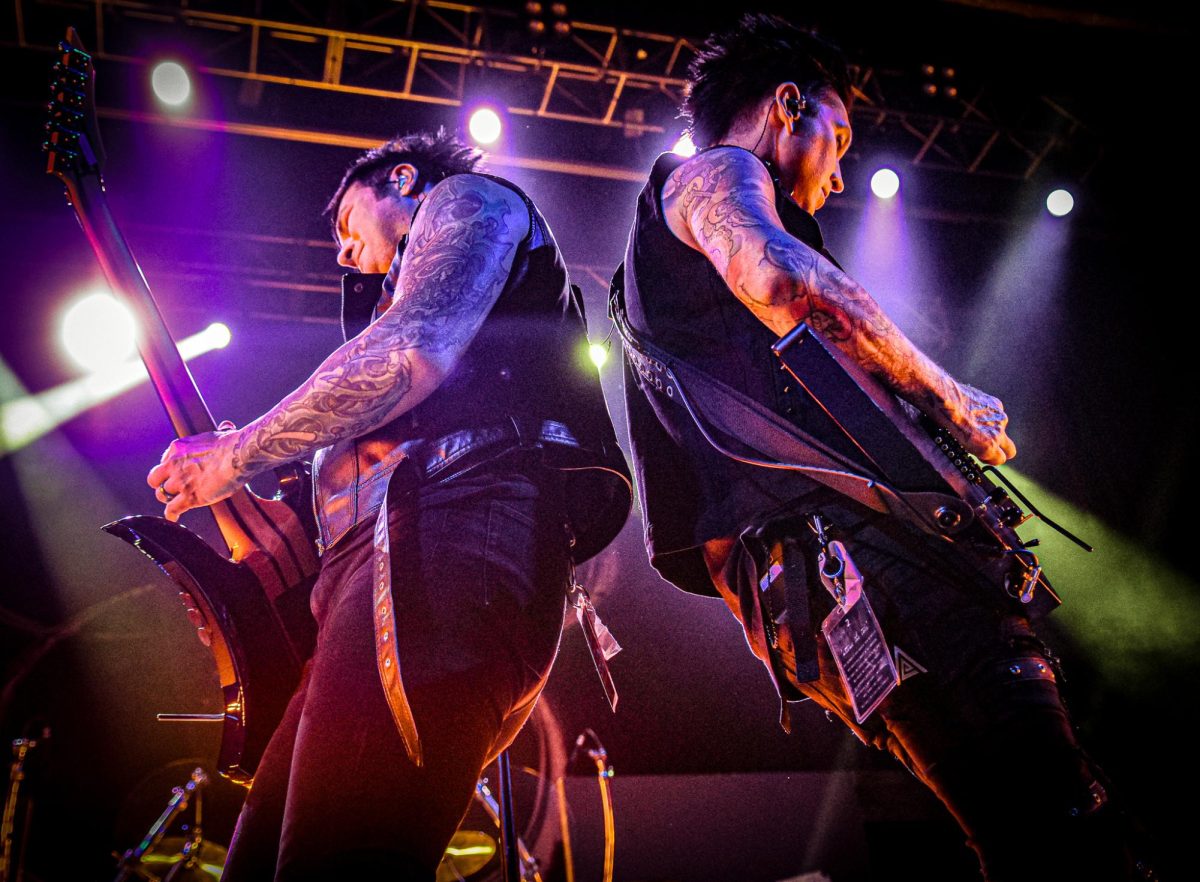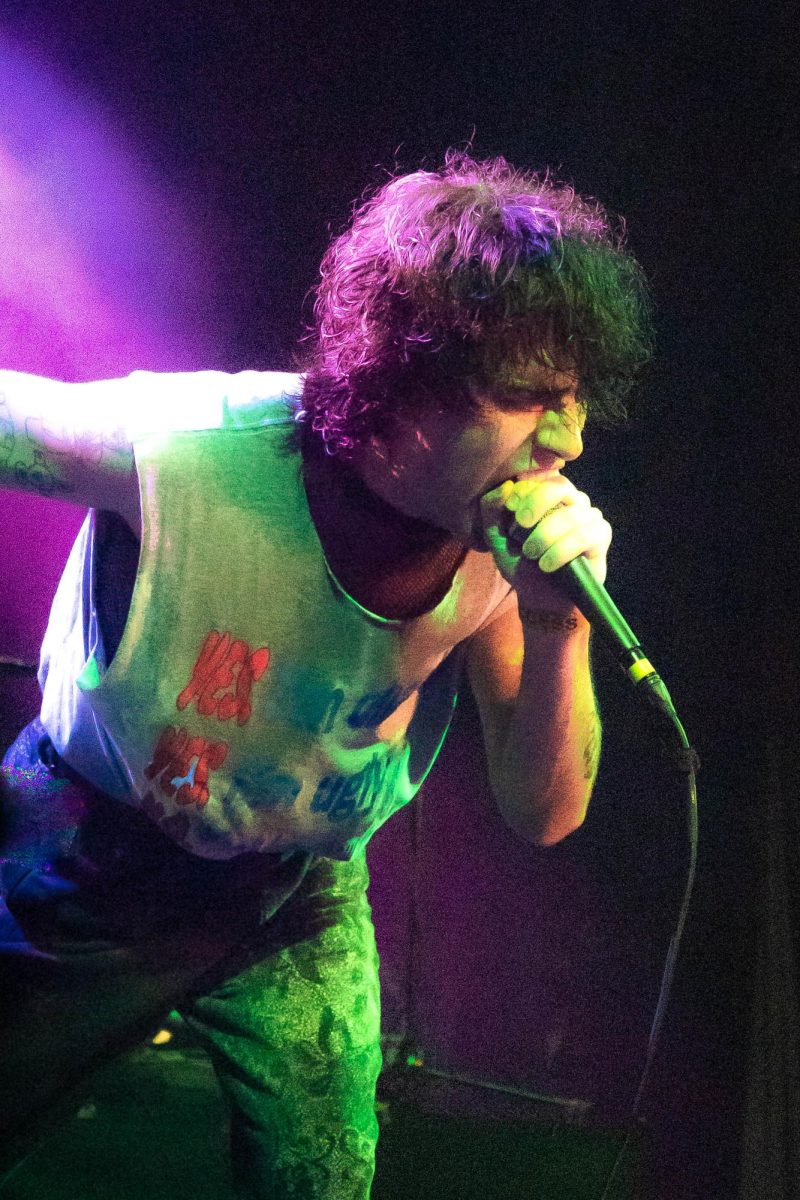The sweat glistens on his upper lip. I lower my head to write; he doesn’t think I am looking. His eyes run from the stone wall across the cement pillars to the trees twenty feet away. He wishes he were vaulting over them, climbing them, scaling them. Sitting is not his forte.
They’re not crazy. “We are not adrenaline junkies. Normal people think we are either weird or dangerous.”
Misunderstanding is common. “People’s reactions vary: some are interested or amazed, some are angry and some are scared for us.”
“Parents tell us that we are setting a bad example for their children. Some people are more open to it. Police don’t like it. As long as you’re not trespassing, people ask a lot of questions.”
They both stand about 5’6″. Jereme Sanders has a mass of hair he keeps tied back under a bandana. His characteristic billowing pants allow free range of movement. He is lean, not bulky. Michael Rivera has an eight pack and biceps the size of small melons. His shoes have a two-inch rubber sole; designed for heavy impact. The skin stretched across their palms is jagged from years of gripping brick, stone and concrete. Ripped calluses and bloody palms are all too frequent and have left their hands coarse.
Sanders approached Rivera in high school after seeing this new form of athleticism on “Ripley’s Believe it or Not” where it was introduced as “a cross between ballet and building jumping.” Rivera’s years in competitive gymnastics would serve him well. They started out slow, training at school during lunch time. They picked it up quickly and Rivera soon found himself in the principal’s office for retrieving a ball from the roof.
Rivera is currently a student at UTSA majoring in Mechanical Engineering. Students may have seen him practicing around campus. He often utilizes his skills when late to class. He works at Sunburst Gymnastics where he teaches his own parkour class and hopes to start a parkour club on campus soon.
Sanders studied kinesiology at UTSA but now teaches at his own gym: American Parkour Academy. He also founded Lone Star Parkour, a website that updates readers with the newest information about parkour in San Antonio.
Sanders and Rivera are two of the founding members of San Antonio Parkour. It has grown in the last seven years, and there are now several parkour groups throughout San Antonio. Every winter Texas even hosts a national parkour jam that attracts athletes from all over the U.S.
Rivera defines parkour as “getting from point A to point B as quickly as possible while overcoming obstacles quickly and efficiently.” This includes running, rolling, vaulting, climbing, jumping and some tricking over walls, ledges, cars, rails, bodies of water and people (many are previous gymnasts; they can’t help it).
Of French origin, parkour was founded by David Belle in 1997. He was exposed to the training philosophy of the French Navy by his father a former military firefighter, and began training and adapting parkour at the age of 15. Since then, Americans have gradually embraced the movement. Featured in American films such as “Casino Royal” and “Prince of Persia” and TV shows including “The Office,” “The Simpsons” and “American Dad” parkour is more recognizable than ever.
Sensationalized on MTV’s “Ultimate Parkour Challenge” series, Sanders hopes that parkour is not seen as a fleeting craze and that competitions stay true to the heart of the movement. Michael shares his sentiment. He believes competition would take away from the comradery amongst the practitioners, known as “traceurs.” The line between over commercialization and exposure is a blurred one; however, illustrated in Jereme’s involvement with a televised G4 competition titled “Jump City: Seattle.”
The movement’s purity is only one challenge amongst many. Some support the building of a parkour park while others feel this would limit freedom; a crucial component to the movement. Trespassing, property damage and liability issues are confronted during almost every training session. Safety is important, but injuries are not uncommon.
Rivera chuckles and then smirks, “What goes through my head? Don’t fall, don’t fall, don’t fall.” Parkour teaches a slow and steady progression. Concrete is unforgiving.
Sanders reaches for his water and drinks slowly. “It’s funny,” he says. “My worst injury was the smallest. I rolled my ankle doing a precision (landing on a narrow surface) and it has affected me for the last year and a half.” When he had the accident he was thinking of a previous jump at the time. “You have to focus on the present, not the past or future, because that is where you mess up.”
“My hands slipped,” the pain still visible in Rivera’s face. “I smacked my ribs on a rock corner and it left a dent and a huge bruise for about a week.” He is known for emerging unharmed from falls no one could possibly walk away from. A running joke is that he has one ‘good’ bail every session, ‘Good’ meaning so bad it was amazing he wasn’t injured.
“It isn’t limited to jocks or preps. There isn’t a specific type. You don’t need money; all you need are shoes.”
They may have different professions and vary in age and body type, but they all find freedom in this movement. Traceurs squirm when confined and at the thought of restriction. They love the challenge and constantly challenge each other.
After parking, our group begins walking to the meeting spot downtown; the Tower of the America’s. Sanders casually questions Rivera, “Hey do you have running gainers?”
“I have them standing. Here, watch.” He positions himself on a parking space line near the courthouse. He sets. He’s up. He’s down. He lands three inches in front of the line.
“That’s good, now you just have to get them running. It’s easier if…” His voice trails off as they walk out of range.
“Ugh, their pissing contests. Now they’re off to see who can do the highest flippy thingy probably,” friend Joel Sanchez comments.
These parkour practitioners have a few favorite spots in San Antonio: downtown, Brackenridge Park and San Pedro Park. They have also been known to train at UTSA, but the campus police shut them down quickly.
One Sunday during this past summer, Rivera, Sanders and a few friends were outside the UTSA Engineering building near the parking garage, trying to get from one side of the building to the other without touching the ground. “We were told by a security officer that a professor had called.” He smiles, “Apparently, we were pressed up against his window and disrupting his class.” One officer threatened with trespassing charges. Once names were recorded, “they made us leave. We walked toward the UC, and were followed until we were off campus. It wasn’t worth the trouble to stay.”
Some read a book, some take a drive and others jump from buildings. While it boasts its own set of complex challenges, parkour offers an escape from the mundane and turns ordinary people into living superheroes.
It can be performed anywhere at any time and is constantly changing. “I can’t ever get bored because there is always something to improve on,” says Sanders. Obstacles are relished in the eyes of a traceur, because for them, “Anything can be overcome.”











